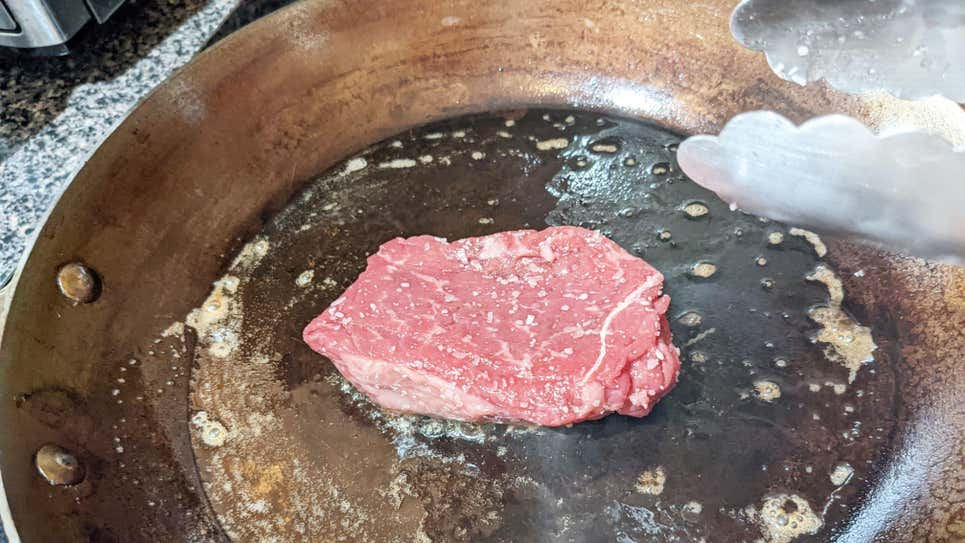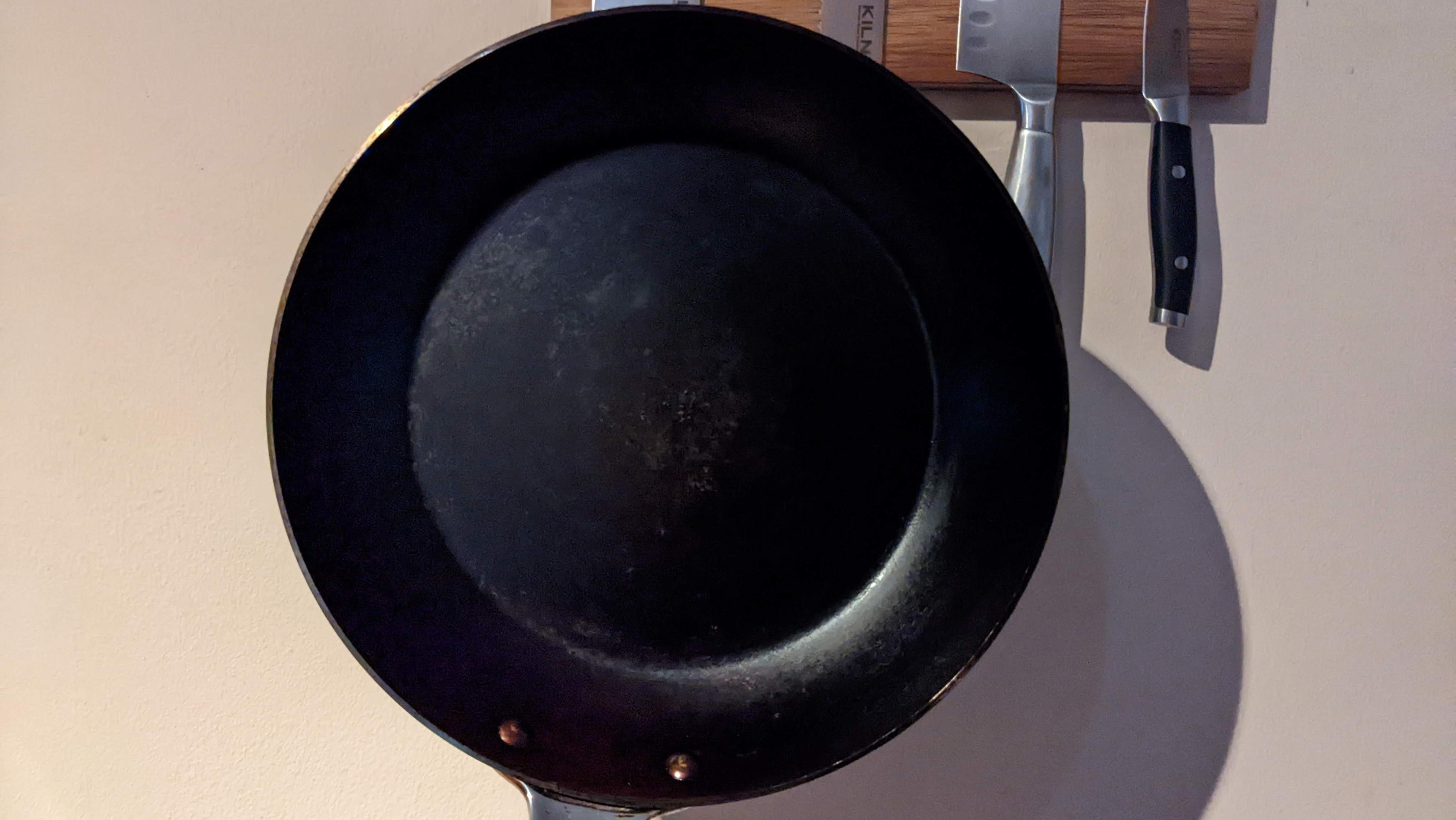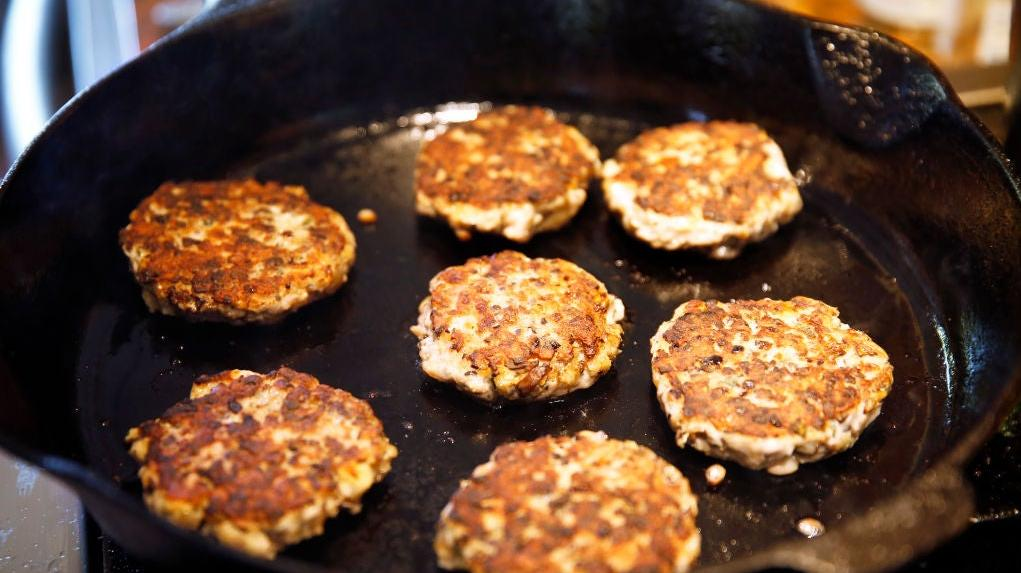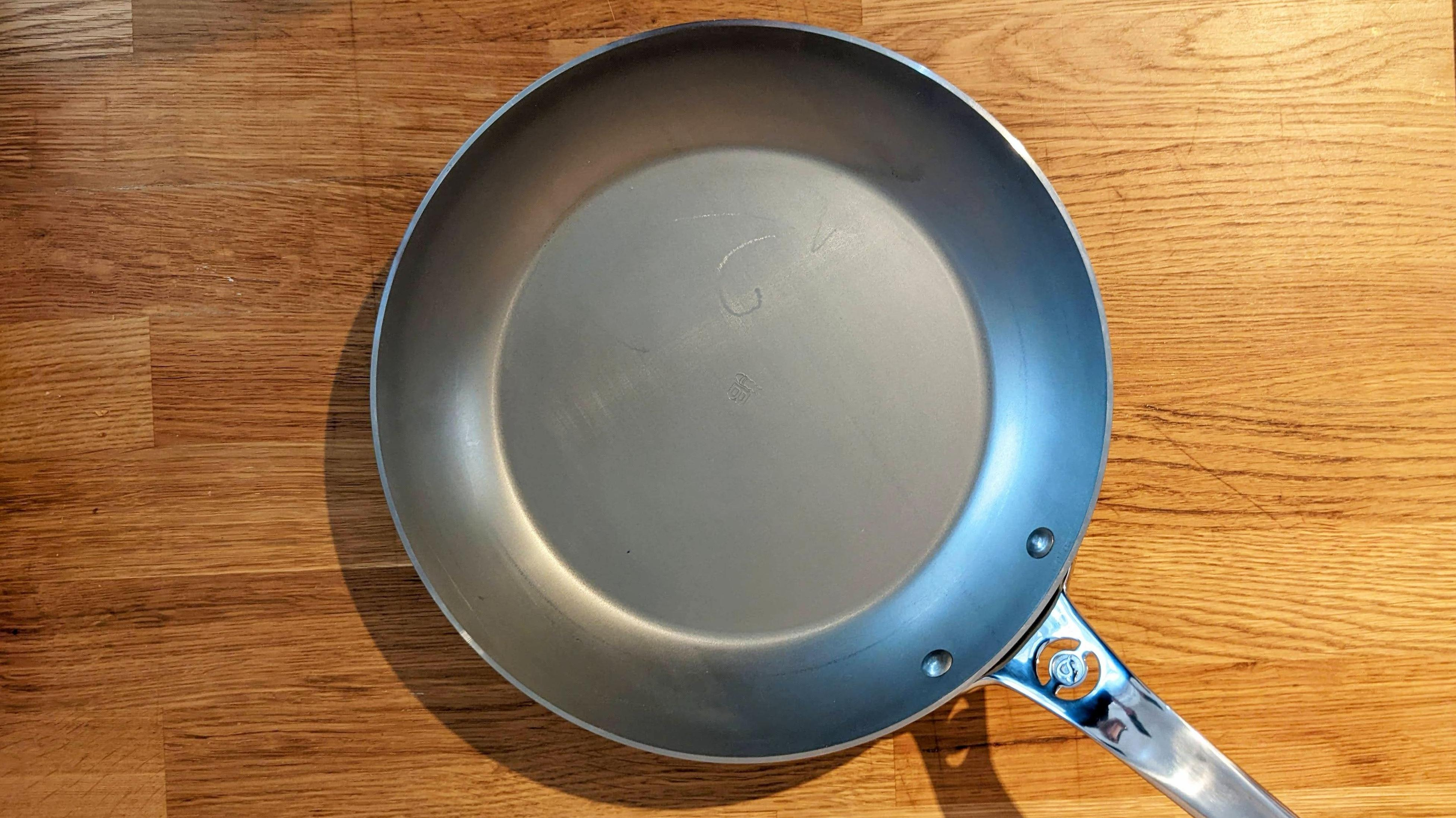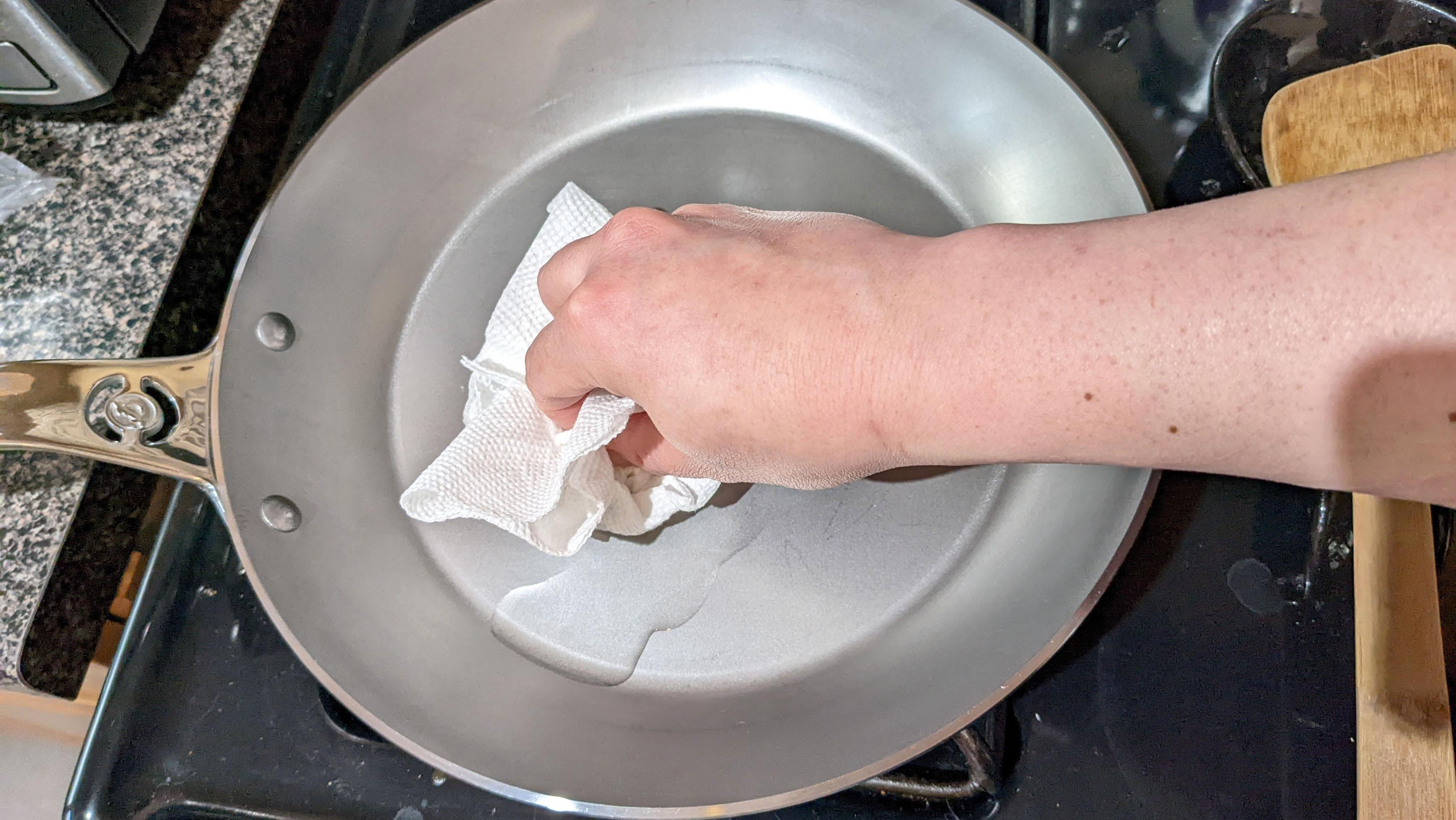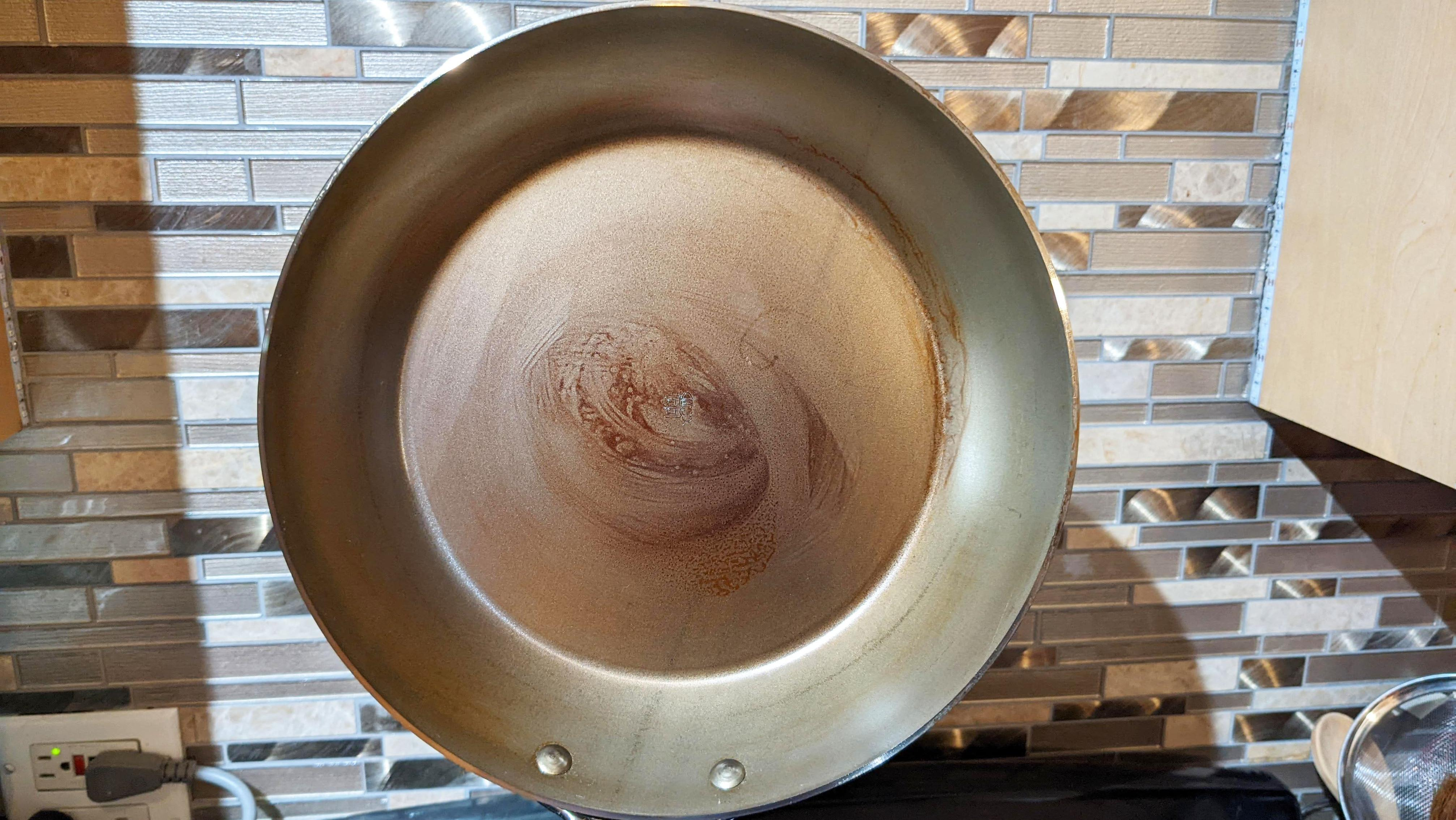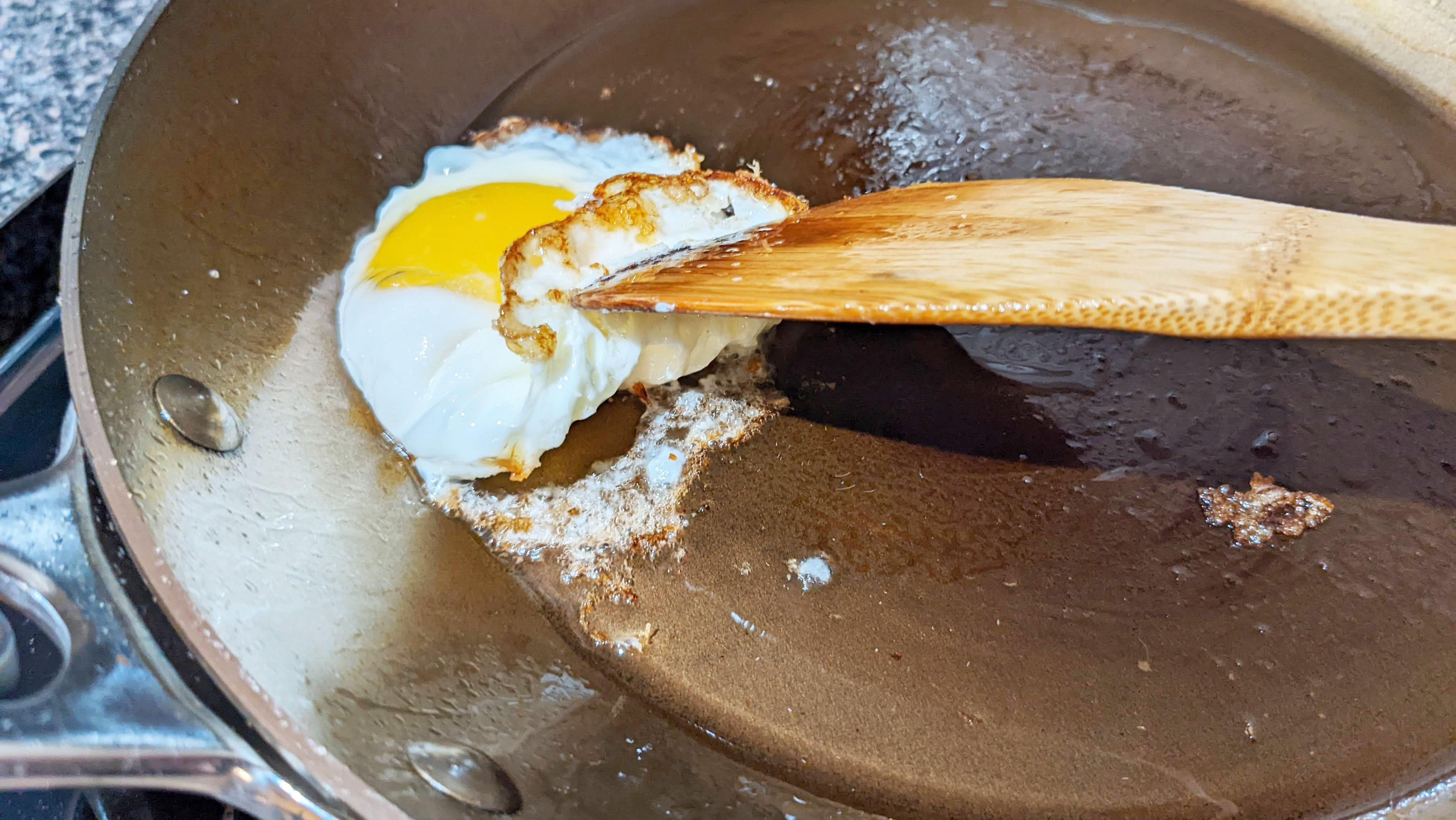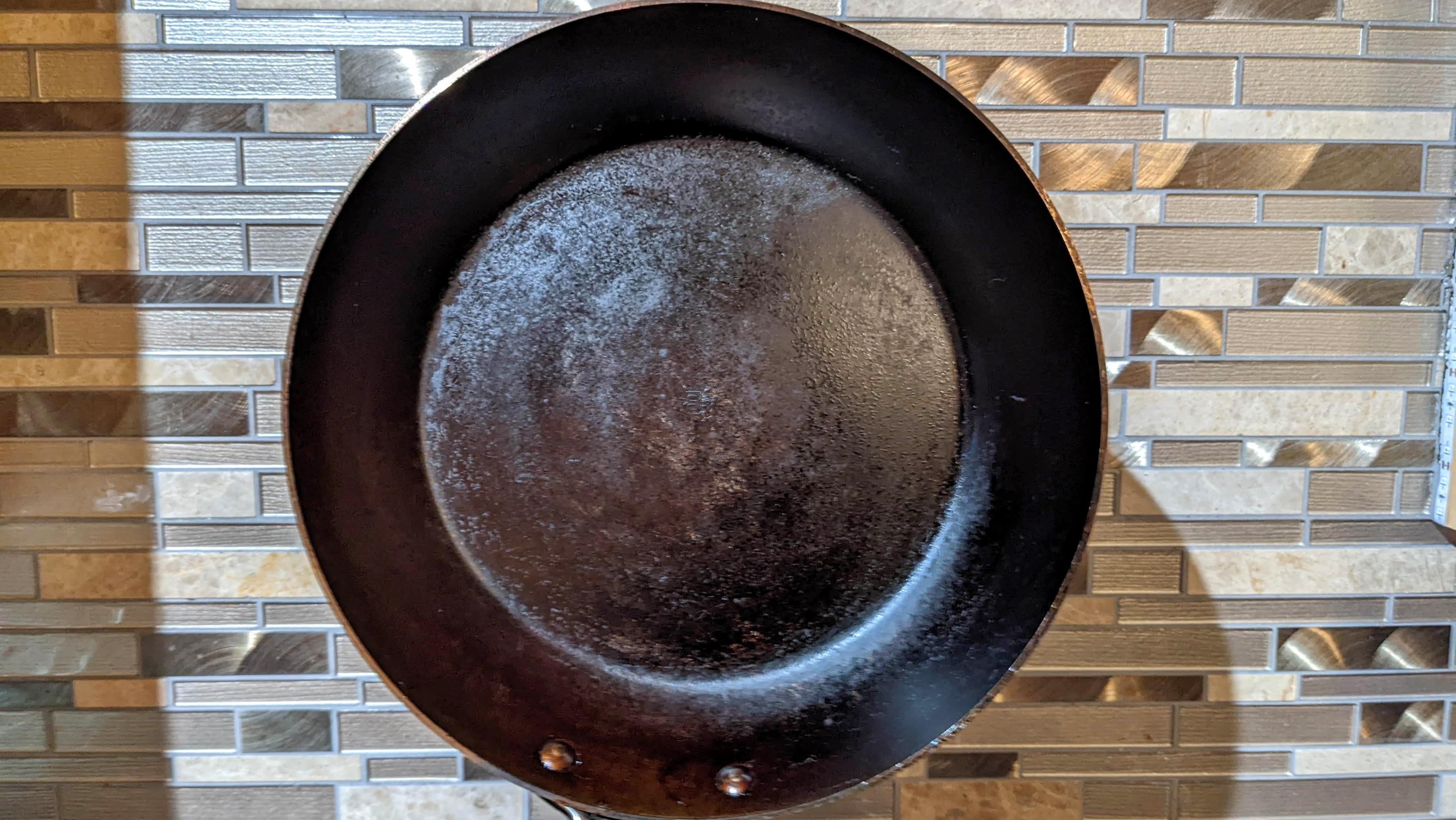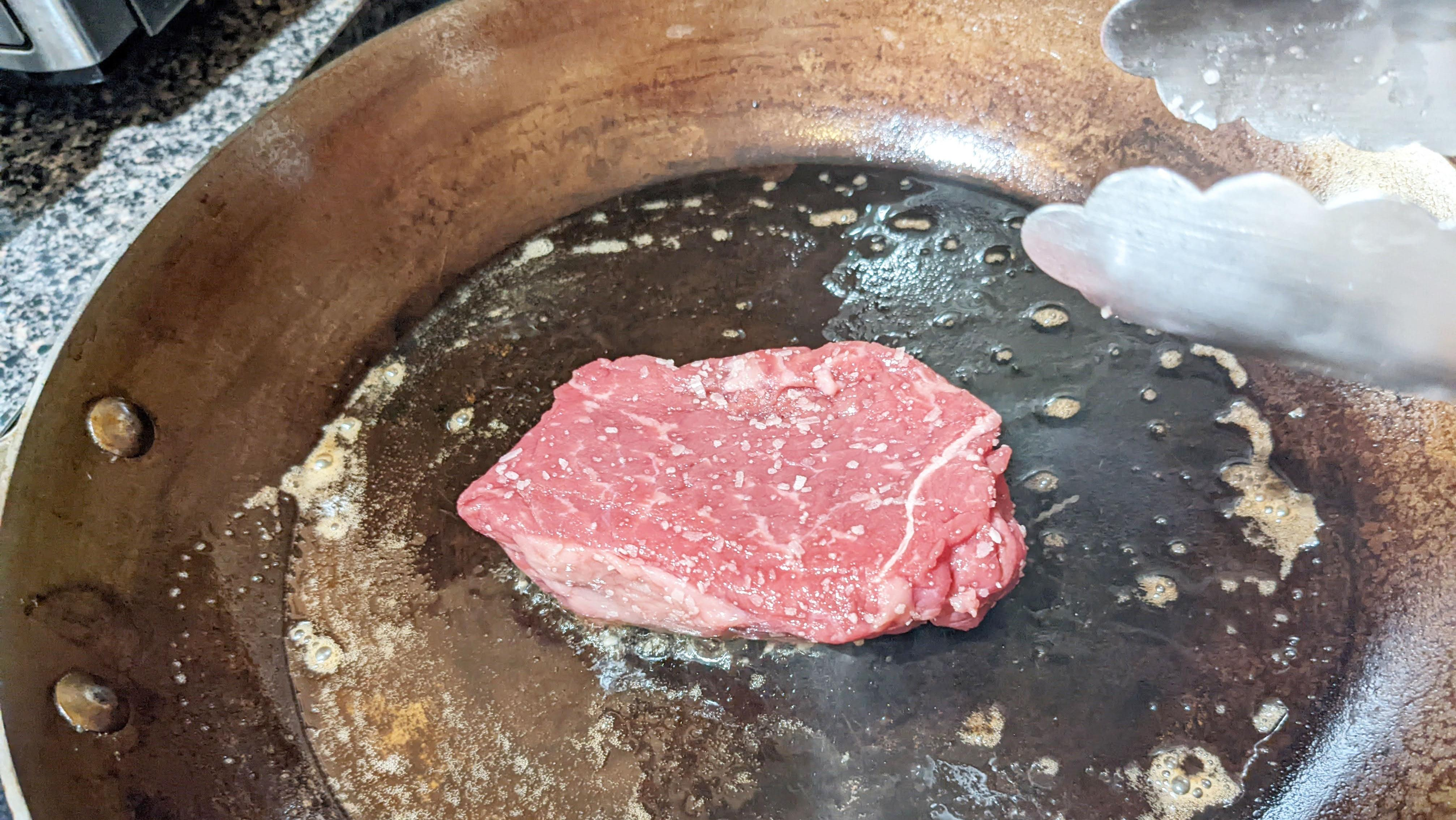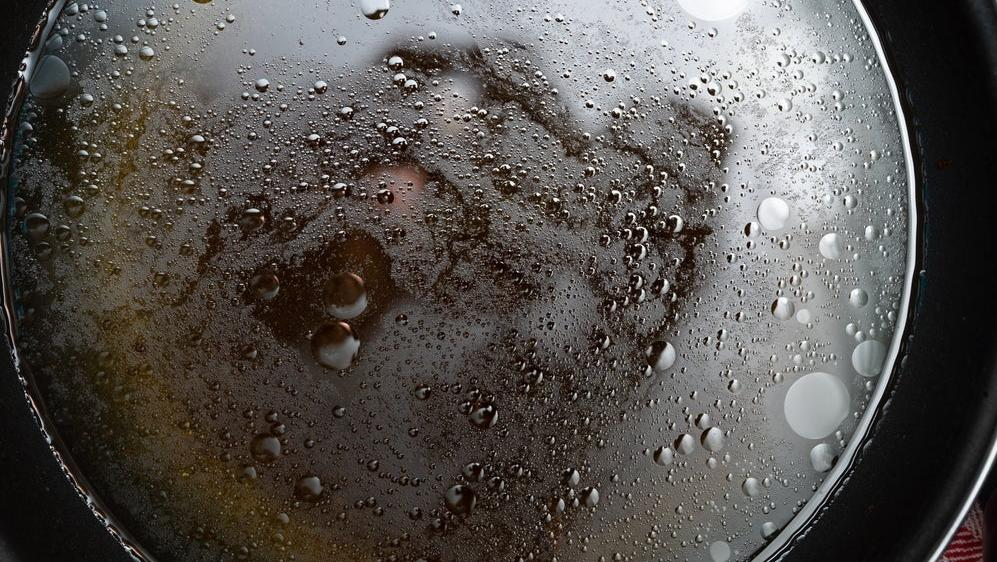9 Things Everyone Should Know About Seasoning Pans
Seasoning a pan seems daunting, but it will change everything about how you cook.
Every now and again, online debates will come up about seasoning your cookware and how to take care of your beloved pieces. For such a simple subject, it's kind of surprising how touchy people get about it. It's pots and pans, everyone, simmer down (pun intended). People have all sorts of guidance when it comes to seasoning new or dinged-up old cookware, and I promise you, it's really not as hard as some people make it out to be.
What is seasoning and why is it so important, anyway?
Seasoning is basically just oil that's been directly baked onto the surface of your pot or pan in a process called polymerization. During the heating process, the oil will create a new surface on your pan that has some remarkable qualities. This patina (I don't get to use that word very often) will eventually become glossy, smooth, and most importantly, nonstick. No Teflon involved.
That means stuff like eggs will slip right off and make your cooking life so much easier. Plus, it's sort of satisfying watching your food slide around effortlessly.
Which types of pans need to be seasoned?
First off, not every pot or pan needs to be seasoned. Don't worry about your nonstick or stainless steel pans.
The most common type of pan you'll want seasoned is a cast iron one, which luckily always come pre-seasoned unless you found yours in a secondhand shop or a dumpster or something (good find!). That's why it's jet-black when you buy it. The black layer isn't paint, it's a pre-season. If you see bare metal or rust spots, don't worry—those can be fixed easily in a process that I explain below.
Another type of pan you'll need to season is anything made out of carbon steel (seen in the photo above), which has all the great heat distribution qualities of cast iron but is significantly lighter to handle.
Both of these types of pans are great for cooking because once they get hot, they stay frickin' hot. This is good for stuff like searing, frying, and stir-frying. There's so much you can do with cast iron and carbon steel pans that if you're a minimalist, you could probably just get by on cooking in a cast iron pan alone.
How to season a carbon steel pan: Start with a good wash
De Buyer is a cookware brand based in France, and the company sent me a carbon steel pan to play around with since I'd never used one before. I'd also never seasoned a pan from scratch before, so I had my work cut out for me.
Carbon steel is an alloy that's mostly iron with a small percentage of carbon in it. This type of cookware is popular in European home kitchens along with restaurant kitchens for its versatility as an all-in-one workhorse. I'll extoll the virtues of a carbon steel pan at a later date, but basically, when you receive a carbon steel pan, you're going to need to season it before you're ready to use it.
(By the way, this seasoning process also works with cast-iron pans, but since they all come pre-seasoned, guess what? You won't need to do this if you buy a brand-new one. Congratulations.)
Many carbon steel pans come with a thin layer of wax or an oil-based protective covering that needs to be washed off with soap and water first. This is the only time you'll ever employ soap during washing. You want to wash and scrub thoroughly, too. Like, put on some music and scrub and rinse for like five minutes straight, using water that's as hot as you can stand.
Also, as pretty as an unseasoned carbon steel pan is right when you get it, you can say goodbye to that shiny silver color, because you're aiming to get that thing eventually as black and as shiny as fresh asphalt.
Next, oil and heat the pan to season
Once you're done washing off the protective layer, wipe the pan dry with a towel or paper towel, and heat it on low over the stove to ensure all the water is gone, because holy shit, do these things rust fast.
You'll want to put a tiny dot of oil in your pan, something that has a medium smoke point, like vegetable, corn, canola, grapeseed, or sunflower oil. Apply this oil either directly on the surface of the pan, or apply it to a paper towel and rub it all over the surface of the pan, including the bottom. As I mentioned previously, this is the first time I'd ever seasoned a pan from scratch, so I botched this part. The photo above is an example of what not to do—I accidentally used too much oil.
You want to use so little that you can't actually see it. If you can see the oil, you've already used too much, so just try and buff it all away evenly with a paper towel.
Then, turn your stove on starting at fairly low heat, and after a few minutes, you can ease it up to medium. Going straight to blast might warp your brand-new pan, which would suck. Take it slow. Let that thing sit until you start seeing a shimmer of smoke start to emanate from its surface, then turn off the heat. If you're fidgety, you can even move the pan around on the heat source to ensure that it's evenly applied as this first layer of seasoning takes hold.
Sticky spots in your seasoning? That’s okay
Hey, you did it! Your pan is now seasoned and it won't rust now. You'll notice that the color is slightly bronzed, and if you did an uneven oiling job like me, you'll see the spots where you had too much oil, since those swirls will have turned a dark sticky brown. That is okay.
To keep seasoning a pan, cook with it
Now, here's the most important part of the seasoning process: Just cook with it. That's all. You don't need to be precious about it, just start using it for everything and anything. Don't forget to use enough oil to coat the bottom of the pan. Butter, vegetable oil, lard, doesn't matter—just use something.
I eagerly started with a fried egg, hoping the carbon steel pan would be nonstick immediately. I was wrong. It stuck, big time. I gently scraped off the egg white that fused to the bottom of the pan with a wooden spoon and got all disappointed.
But eventually, I kept using the pan for cooking. I sautéed asparagus in it. I seared chicken thighs in it and finished them off in the oven. I used it to make steaks for dinner a few times. Finally, at some point my brain went on autopilot and I pretty much used the de Buyer carbon steel pan to do, like... everything.
Gradually, the pan started taking on a dark brown color, even black in some spots. I noticed meats I seared were no longer sticking much, if at all. I continued using it for stuff, including bacon; high-fat food is especially ideal to season with, since it releases so much oil, further seasoning the pan.
Then one night, as I was cooking, I realized that my pan had gone from that original bright, shiny metallic color to a burnished black. For the hell of it, I cooked up a pair of sunny-side-up eggs, and lo and behold, they slid around the whole pan like it was a skating rink. I had done it: I had completely seasoned my pan.
What to avoid during the seasoning process
Overall it took a few months of fairly regular cooking to fully season my carbon steel pan. I wasn't necessarily using this pan every day, but at least a few times a week. And now it was where I wanted it. So really, the secret to seasoning a pan isn't anything more than using it regularly, and once it's seasoned, it'll stay that way, provided you don't hack away at it with a drill or something.
Early in the seasoning process, acid will de-season your pan. I absentmindedly squeezed a lemon into some vegetables and I stripped all my seasoning off in one spot, all the way down to the shiny metal. I grumpily re-oiled the pan, heated it back up until it started smoking, and let it rest. I resumed using it as usual, and eventually, the shiny metal color became darker and darker. Then later, once the seasoning was starting to look good, I tossed in a splash of white wine to deglaze for a sauce, and... I stripped away at my hard work yet again.
You can eventually use acid while cooking for sauces and such, but that's one thing to avoid at the beginning when you're first starting to season your pan.
At first, you'll also want to avoid scraping the pan with metal utensils, like spatulas. Eventually, once the patina has built up enough, using metal spatulas will be okay. I learned that the hard way by trying to scrape off crusty egg whites with a fish spatula, which scratched off some of my hard work.
How to clean your seasoned pan
Cleaning a seasoned pan is easy. Honestly, all you need to do is wipe the pan out with a paper towel or a cloth after using it. Done.
If there's something stubborn that won't come off, you can use water to soften it up, then scrub at it gently with a paper towel. I've successfully scraped burned stuff off with a wooden spoon too, just making sure to be super gentle.
Yes, you'll have gnarly stuck-on bits from time to time. In those cases, just take a spoonful of kosher salt and pile it on the crusty part of the pan. If you scrub away at it using a paper towel in tandem with the salt and a little bit of oil, you'll typically be able to get those trouble spots cleaned using the salt as an abrasive. It's easier to do this if your pan is still warm.
Add as much salt as you need. Then rinse the pan out with water, wipe all the excess away, and heat it gently on the stove until it's completely dry, then remove it from the heat.
Rust? No problem
Occasionally the seasoning in your pan might wear down (like if you cook with acid, like I did), or flake off in spots. Then you might notice spots with rust on them. Don't worry, you don't have to start the process over completely. Take a piece of steel wool, scrub off all the rusty stuff and rinse it out with water.
Then dry the pan, apply a thin coat of oil all over it, like you did in the first step, and heat it up until it starts smoking, then shut off the heat. Yup, it's that same process as before. I think you're starting to get it.
Continue using the pan just like before, and eventually, the seasoning will have created a substantial protective layer over that spot again.
Overall, this kind of stuff might make the process of seasoning a pan sound like a terrible pain in the ass. But honestly, it's less about the fussiness, and more about the fact that you just need to keep cooking in it. I mean, you were going to make dinner anyway, weren't you? Might as well do it in a pan that's eventually going to become your best friend in the kitchen.
